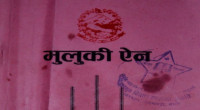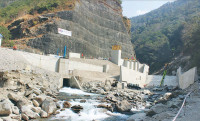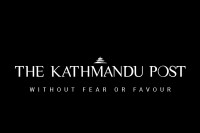Gen Z View
Where the protest faltered
What began as a unified outcry scattered into divided camps, revealing the organisational and structural cracks.
Smriti Shrestha
On September 8, a wave of youth-led protests swept across Nepal, which many called the Gen Z movement. Sparked by frustration over corruption, cyclical political warfare and stagnation, a ban on social media, thousands of young Nepalis took to the streets and social media demanding accountability and reform. For a moment, it felt like a generational awakening, a powerful shift toward civic consciousness. But as momentum grew, so did fragmentation. What began as a unified outcry soon scattered into divided camps, revealing the deeper organisational and structural cracks within the movement itself, the very cracks that Collective Impact Theory warns against.
While studying the framework of Collective Impact, a model often used to drive large-scale social progress, I couldn’t help but draw parallels to the Gen Z protests. The theory outlines five core conditions for effective, lasting impact: Common agenda, shared measurement, mutually reinforcing activities, continuous communication and backbone support.
Here’s how each of those lenses raises uncomfortable, but necessary, questions for our generation:
Common agenda
Did we have a common agenda? Did the protest truly share a collective vision for change? From what it looks like at this point, the shared vision seems clouded, which may explain why we’re seeing less collaboration and more partitions, even among the so-called Gen Z leaders. A movement without coherence risks dissolving into parallel ambitions rather than a unified direction.
Shared measurement
Did we hold ourselves and each other accountable, or have we been slipping into blame games and the spiral of political hegemony we set out to challenge? Without clear measures of progress and shared definitions of success, even the most passionate activism can lose its way.
Mutually reinforcing activities
Are we playing our parts—whether through critical thinking, research, creative expression, or mobilisation—and coordinating through a mutually reinforcing plan of action? Do we even have one? True collective action requires each contributor to know their role in a broader ecosystem, not just perform in isolation.
Continuous communication
Is there consistent and open communication, or is it once again being fractured by the same elitism and gatekeeping of power and opportunity we were fighting against? Without equitable access to platforms, education and leadership pipelines, even the most revolutionary movements risk reproducing the hierarchies they resist. Do we still share mutual objectives and a common motivation, or have we drifted into fragmented circles of influence?
Backbone support
Are we scattered and divisive, or do we have a team with the skills, values, and expertise to act as the backbone of our movement? Do we have a structure to coordinate what comes next?
Perhaps what we’re witnessing is not failure, but the growing pains of a generation learning to move from reaction to structure, from outrage to organised impact.




 17.12°C Kathmandu
17.12°C Kathmandu












